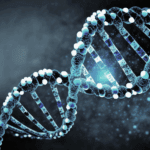Mitochondria, often described as the cell’s power generators, play an indispensable role in sustaining life by producing the energy cells need to function. These tiny organelles house their own DNA, distinct from the cell’s nuclear genome, and are responsible for generating adenosine triphosphate (ATP) through a process called oxidative phosphorylation. ATP serves as the primary energy currency for a vast array of cellular activities, from muscle contraction to nerve signaling. However, when mitochondria fail to perform optimally due to genetic mutations or other dysfunctions, the consequences can be profound, leading to a diverse group of disorders collectively known as mitochondrial diseases.
Mitochondrial diseases are complex and heterogeneous, both genetically and clinically. They arise from mutations either in mitochondrial DNA (mtDNA) or in nuclear DNA (nDNA) genes that encode proteins essential for mitochondrial function. These mutations disrupt the delicate balance of mitochondrial processes, impairing energy production and affecting cellular metabolism, signaling, and quality control mechanisms. Because mitochondria are present in nearly all cell types, any organ can be affected, but those with the highest energy demands-such as the brain, muscles, heart, and eyes-are particularly vulnerable. This explains why symptoms often involve neurological impairments, muscle weakness, vision problems, and cardiac issues.
The clinical presentation of mitochondrial diseases is remarkably varied. Some individuals experience symptoms in infancy or early childhood, while others may not show signs until adulthood. The severity ranges from mild, single-organ involvement to severe, multi-system disorders that can be life-threatening. This variability is partly due to the phenomenon of heteroplasmy, where cells contain a mixture of normal and mutated mitochondrial genomes. Disease manifests only when the proportion of mutated mtDNA crosses a critical threshold, disrupting mitochondrial function sufficiently to cause symptoms.
Despite advances in genetic sequencing and molecular biology, diagnosing mitochondrial diseases remains challenging due to their diverse manifestations and overlapping symptoms with other conditions. Moreover, the complex interplay between mitochondrial and nuclear genomes complicates understanding of disease mechanisms. Nonetheless, ongoing research continues to shed light on the molecular underpinnings of these disorders, paving the way for improved diagnostic tools and therapeutic strategies.
Read more: Groundbreaking Nanoparticle Technology Reverses Parkinson’s Disease in Stunning Study
The Challenge of Mitochondrial Genetic Disorders
Mitochondrial diseases arise when mitochondria fail to produce sufficient energy for cellular needs. Among these disorders, those linked to mutations in the POLG gene are particularly complex. POLG encodes polymerase gamma, the enzyme responsible for copying and repairing mitochondrial DNA. This replication and repair process is critical because mitochondrial DNA is constantly exposed to damage from cellular stressors. Over 300 distinct mutations in POLG have been identified, each capable of compromising the enzyme’s function. The resulting mitochondrial DNA instability leads to a cascade of cellular dysfunction.
The clinical manifestations of POLG-related conditions are notoriously diverse. Some patients develop severe symptoms in early childhood, such as in Alpers-Huttenlocher syndrome, which can cause liver failure and seizures, often leading to death within a few years. Others may not exhibit symptoms until adolescence or adulthood, with milder signs like muscle weakness or drooping eyelids. The variability depends on the specific mutations and how many copies of the mutated gene are inherited.
A New Molecular Ally: PZL-A
Traditional gene-editing techniques, while promising in many contexts, face significant obstacles in tackling mitochondrial diseases due to the sheer number and variety of mutations involved. Instead, scientists have explored small molecules that might enhance or restore mitochondrial function. The recent breakthrough centers on a molecule, named PZL-A, discovered after screening a vast library of over 270,000 compounds for their ability to boost the activity of normal polymerase gamma.
The researchers reasoned that a molecule capable of enhancing the healthy enzyme might also improve the function of its mutant forms. After identifying a promising candidate, they chemically refined it to increase its potency and tested it against four common POLG mutations, which collectively account for about 70% of cases. Using cryogenic electron microscopy, the team visualized how PZL-A binds within a pocket of the polymerase gamma enzyme complex-a site unaffected by these common mutations.
By stabilizing the enzyme’s structure, PZL-A enhances its ability to replicate and repair mitochondrial DNA, effectively “rescuing” the function of mutant polymerase gamma. Laboratory experiments with patient-derived cells showed that treatment with PZL-A accelerated the restoration of mitochondrial DNA after intentional depletion, sometimes restoring function to levels comparable to healthy cells.
Read more: What Your Favorite Food Says About Your Personality, According to Psychologists
From Lab Bench to Clinical Trials
While these laboratory findings are encouraging, the true test lies in human trials. Building on this foundational work, a related molecule structurally similar to PZL-A is undergoing clinical evaluation. Initial trials focus on safety in healthy volunteers, with plans to extend testing to patients with mitochondrial disorders in the near future. This clinical development is being spearheaded by Pretzel Therapeutics, a company linked to several researchers involved in the discovery.
Experts in mitochondrial biology have expressed cautious optimism. The ability of a small molecule to stabilize mutant polymerase gamma represents a significant leap forward, given the limited success of previous attempts to develop targeted therapies for these diseases. Should clinical trials confirm the compound’s efficacy and safety, it could become the first treatment aimed at the root cause of POLG-related mitochondrial disorders, rather than merely managing symptoms.
Broader Implications for Mitochondrial Health
Mitochondrial DNA depletion is not only implicated in inherited disorders but also plays a role in aging and age-related diseases, including neurodegenerative conditions. The strategy of enhancing mitochondrial DNA maintenance through small molecules like PZL-A may thus have wider therapeutic potential. Researchers are exploring whether similar compounds could help mitigate mitochondrial dysfunction in diseases such as Parkinson’s, amyotrophic lateral sclerosis (ALS), and other conditions where mitochondrial health is compromised.
In parallel, other scientific advances are expanding the toolkit for mitochondrial medicine. For example, innovative stem cell-based methods have dramatically increased the production of high-quality mitochondria, potentially enabling new regenerative therapies. Additionally, combination therapies aimed at replenishing mitochondrial DNA precursors have shown promise in clinical trials, offering hope for improved outcomes in patients with mitochondrial DNA depletion syndromes.
Read more: Think It’s a Heart Attack? Don’t Ignore These Signs—and Know What to Do
A Glimpse Into the Future
The discovery of PZL-A and its potential to restore polymerase gamma function marks a turning point in the quest to treat mitochondrial diseases. While challenges remain-such as confirming long-term safety and determining optimal treatment regimens-the progress made offers a beacon of hope for patients and families affected by these complex conditions.
As research continues, the integration of small molecule therapies with emerging techniques in gene editing, mitochondrial transplantation, and cellular reprogramming may one day transform mitochondrial medicine. This multidisciplinary approach promises not only to alleviate symptoms but also to address the underlying causes of mitochondrial dysfunction, improving quality of life and longevity for many.
Conclusion
Mitochondrial diseases, long considered untreatable, are now entering a new era of therapeutic possibility. The identification of a molecule capable of enhancing the function of mutant polymerase gamma enzymes offers a novel and promising avenue to combat these disorders at their source. With ongoing clinical trials and expanding research efforts, the scientific community moves closer to delivering effective treatments that could change the lives of those affected by mitochondrial dysfunction worldwide.










